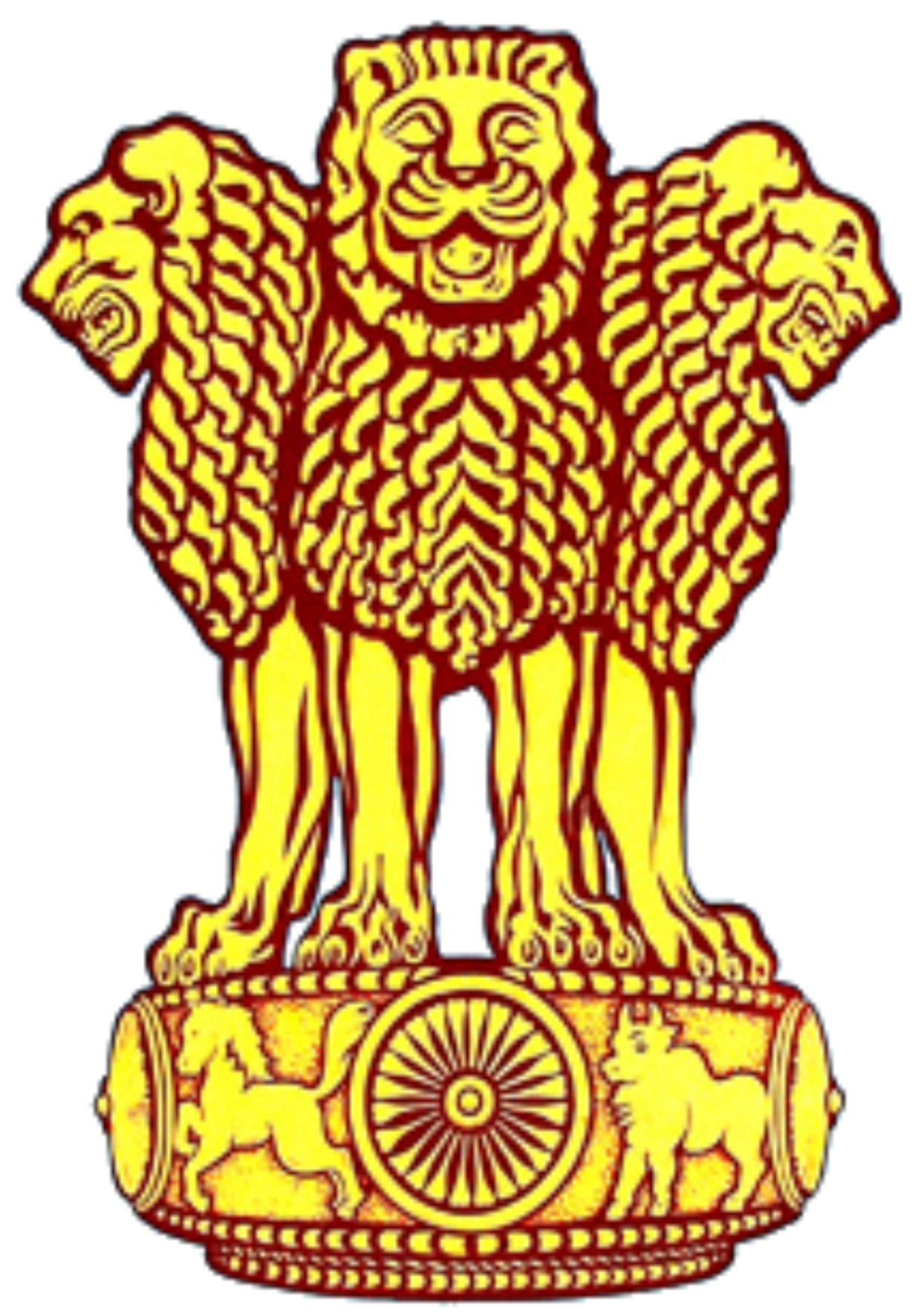
This image has format transparent PNG with resolution 1240x1772.
You can download this image in best resolution from this page and use it for design and web design.
Coat of arms of India PNG with transparent background you can download for free, just click on download button.
The Indian coat of arms is the symbol of the Republic of India, formally called 'National emblem'. It has four lions. The idea for this coat of arms was taken from the Sarnath Lion Capital that was built by Indian emperor Ashoka. It's a pillar in the city of Sarnath. Ashoka built it around 250 BC using a single piece of polished sandstone. The symbol is invariably used on all types of currency notes, passports and coins of India. In the two dimensional view of this symbol, one can see 3 heads (the fourth being hidden from view). It was adopted on 26 January 1950, the day that India became a republic.
The lions represent royalty and pride.
The wheel beneath the lions is called the Ashoka Chakra or Dharmachakra comes from Buddhism, representing Truth and Honesty. The horse and the bull probably stand for the Strength (Mental) of the people of India. There are four Ashoka Chakras in total around the emblem and two horses and bulls each.
The verse written below, Satyamev Jayate is a very popular and revered saying in the ancient language Sanskrit. It can be divided phonetically into three words - Satyam, which means truth, Ev or aev, that is, only and Jayate which means wins or won. The whole verse can be translated as, 'Only (the one who speaks) the truth will win or wins.' This verse describes the power of honesty and truth in society and religion. You can lie to your friends, family, but you cannot lie to God and yourself. Your conscience will forever be stained.
The verse can also be translated as 'The truth alone triumphs'. Meaning that even after all the lies and deceptions with which we have been fooled, the truth will finally emerge victorious.
In 1947, as the date of independence for India and Pakistan approached, Jawaharlal Nehru gave charge of finding a suitable national emblem to Badruddin Tyabji, a civil servant, freedom fighter and member of the Constituent Assembly. Art schools all over the country were approached for designs, but none of them were found suitable as most were similar to the emblem of British Raj. Along with the Flag Committee headed by Dr. Rajendra Prasad, Tyabji and his wife suggested to use the Ashoka Capital, with four lions on top and the Ashoka Chakra flanked by a bull and horse below. Tyabji's wife Surayya Tyabji drew it and sent it to the printing press at Viceregal lodge for printing. This design was selected and has remained the emblem of the Indian government ever since.
The emblem forms a part of the official letterhead of the Government of India and appears on all Indian currency as well. It also functions as the national emblem of India in many places and appears prominently on Indian passports. The Ashoka Chakra (wheel) on its base features in the centre of the national flag of India.
The usage of the emblem is regulated and restricted under State Emblem of India (Prohibition of Improper Use) Act, 2005. No individual or private organisation is permitted to use the emblem for official correspondence.
The actual Sarnath capital features four Asiatic lions standing back to back, symbolizing power, courage, confidence and pride, mounted on a circular base. At the bottom is a horse and a bull, and at its center is a wheel (Dharma chakra). The abacus is girded with a frieze of sculptures in high relief of The Lion of the North, The Horse of the West, The Bull of the South and The Elephant of the East, separated by intervening wheels, over a lotus in full bloom, exemplifying the fountainhead of life and creative inspiration. Carved from a single block of sandstone, the polished capital is crowned by the Wheel of the Law (Dharma Chakra).
In the emblem finally adopted, only three lions are visible, the fourth being hidden from view. The wheel appears in relief in the centre of the abacus, with a bull on the right and a galloping horse on the left, and outlines of Dharma Chakras on the extreme right and left.The two animals, horse, and bull, represented right below the abacus also hold a great significance. The bull represents hard work and steadfastness, while the horse represents loyalty, speed, and energy. The bell-shaped lotus beneath the abacus has been omitted.
Forming an integral part of the emblem is the motto inscribed below the abacus in Devanagari script: Satyameva Jayate (English: Truth Alone Triumphs). This is a quote from Mundaka Upanishad,[6] the concluding part of the sacred Hindu Vedas.
In this page you can download free PNG images: Coat of arms of India PNG images free download